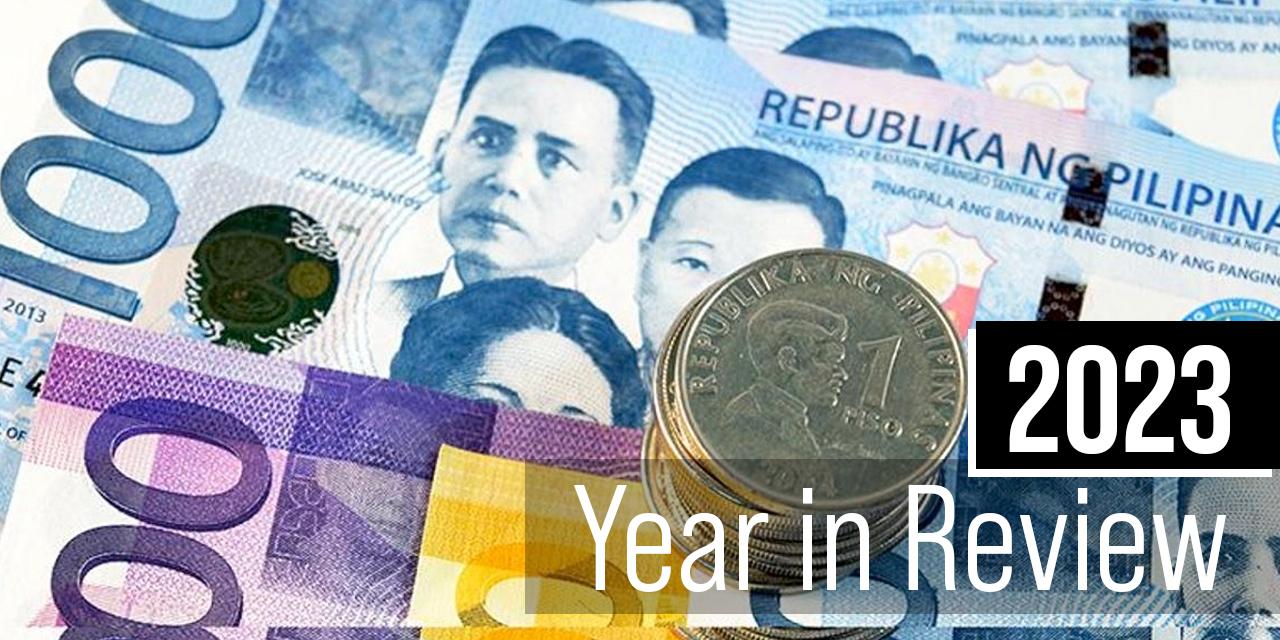Cautious optimism for peso after ‘mixed bag’ in 2023

The Philippine peso saw a “mixed bag of volatility” in 2023 but still ended the year stronger than its US counterpart, with economists cautiously optimistic given both internal and external factors affecting the currency.
The Philippine peso closed at P55.79:$1 on the first trading day of the year and hovered mostly around the P54-56:$1 range throughout 2023, before closing at P55.37:$1 on December 29.
The latest showing of the peso is the best showing in three weeks, and reflects an appreciation of 38.5 centavos from P55.755:$1 recorded on Dec. 29, 2022, the last trading day of the previous year.
“For 2023, the US dollar/peso exchange rate declined by -0.385 or -0.7%, making the peso as one of the best performing Asia/ASEAN currencies since the start of 2023,” Rizal Commercial Banking Corp. chief economist Michael Ricafort said in an email.
“The performance of the Philippine peso in 2023 can be described as a mixed bag of volatility,” Security Bank Corp. chief economist Robert Dan Roces said in an email.
Among the factors that influenced the peso’s performance this year, Roces said, are monetary tightening and the inflation trajectory of the country.
The Bangko Sentral ng Pilipinas (BSP) has already hiked policy rates by a cumulative 450 basis points since May 2022, Its latest policy tightening was done during an off-cycle meeting on October 26 which hiked rates by 25 basis points.
The move brought the benchmark policy rate to 6.5%, the highest in 16 years since it was kept at 7.5% in May 2007. The overnight deposit rate was hiked to 6.0%, while the overnight lending facility rate was increased to 7.0%.
The announcement was made after trading hours were finished on October 26, when the peso closed at P56.96:$1. The peso then closed stronger at P56.955:$1 the following trading day, October 27.
Policy tightening has been a tool of the central bank to tame inflation, which stood at 4.1% in November. This brought the year-to-date figure to 6.2%, higher than the government’s target range of 2.0% to 4.0%.
“Overseas Filipino worker remittances and the business process outsourcing (BPO) sector provided some counterforce, offering steady inflows of foreign currency and supporting the peso,” Roces said.
Latest data available from the BSP show that cash remittances—money transfers made through banks or formal channels—were recorded at $27.492 billion in the January to October period, 3.1% higher than the comparable period in 2022.
“Overall, the peso’s performance in 2023 and the outlook for 2024 require a cautious stance. While there are encouraging signs of resilience and potential appreciation, external factors and domestic uncertainties remain,” Roces said.
For the coming year, RCBC’s Ricafort said the peso-dollar exchange rate could range between P54.00-P57.00:$1, largely affected by global crude oil prices, easing inflation towards central bank targets, and possible rate cuts in the United States that could be matched locally. — BM, GMA Integrated News




